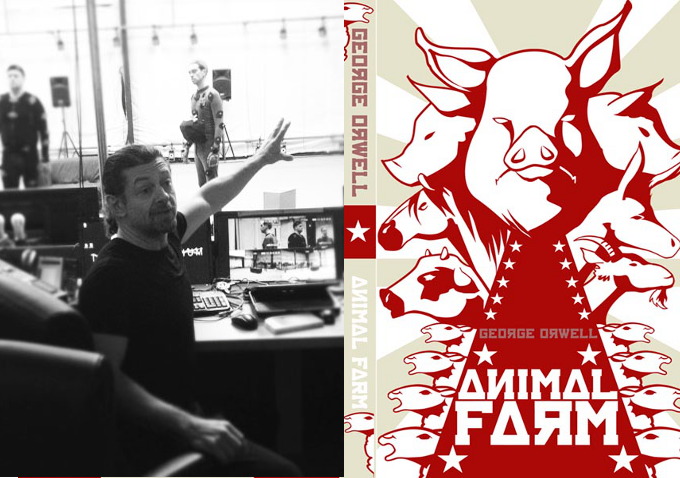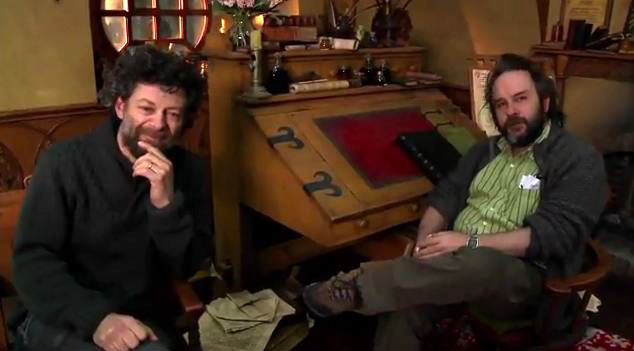As Hollywood’s resident master of performance-capture technique, Andy Serkis must be one of the least recognizable famous people in the world. After years of starring in blockbusters like the Lord of the Rings trilogy (and the upcoming Hobbit movies), Rise of the Planet of the Apes and The Adventures of Tintin, Serkis is in the bizarre position of possibly becoming more noticeable by moving behind the camera. Reports are that the actor behind Gollum will soon be directing a new adaptation of George Orwell’s acclaimed novel Animal Farm.
Last year, Serkis joined with producer Jonathan Cavendish (Bridget Jones’ Diary) to form his own performance-capture studio, The Imaginarium. In conversation with The Hollywood Reporter, Serkis opened up about the studio’s first projects, including Animal Farm and an adaptation of Samantha Shannon’s book series The Bone Season.

Since Serkis helped his friend Peter Jackson by serving as second unit director on the recently wrapped Hobbit films, it was only a matter of time before the mo-cap artist took charge of his own feature.
As a huge fan of Serkis’ work, right down to The Prestige and tiny indie films like Sex & Drugs & Rock & Roll, I couldn’t be more thrilled – but he’s certainly picked a challenge for his directorial debut. Adapting Animal Farm will require a deft hand to avoid Orwell’s tendency toward heavy-handed political allegory, never mind the technical side of things. Incorporating performance capture technology with keyframe animation and puppeteering will prove a serious test for the believability of modern CGI.
And for those just here looking for some tidbits on The Hobbit, never fear: in praising Jackson’s controversial high-frame-rate photography, Serkis helped to illuminate why the LOTR director has so strongly defended his new techniques:

"The wonderful thing about 48 fps is [how it handles] the integration of live action and CG elements; that is something I learned from The Hobbit ... We are so used to 24 fps and the romance of celluloid … but at 48 fps, you cannot deny the existence of these CG creations in the same time frame and space and environment as the live action. It works incredibly well."
More convincing, integrated CGI would certainly be a welcome addition to many a filmmaker’s toolkit.